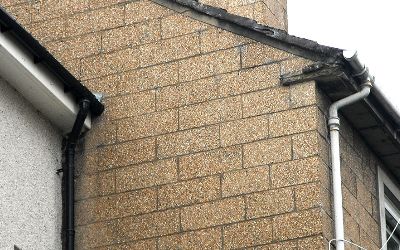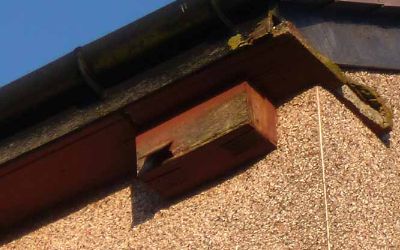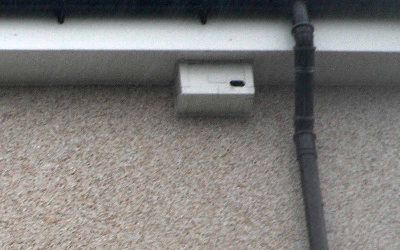Retro-fitting swift boxes
There are now many styles of boxes from the wild and adventurous inventions of individual householders to mass-produced manufactured ones. We do not include here “boxes” that are made to be installed within the structure of a building (such as the Ibstock or Swegler swift bricks). In some styles of building, retrofitting really is the only option. One of the principal examples is the renovation of tenement properties built post-war. In many of these the soffit is boxed with a pre-formed PVC box.

In addition the exact location of swift nest sites may not be known in larger schemes. In these cases the simple “shoe box” nest box has been used. It can be made using off-cuts from the pvc and fitted tight against the soffit – preferably on the corner of the building.


We now believe that, in Glasgow at least, omitting the overhang over the entrance is a mistake. Having, in Glasgow, omitted the overhang over the entrance for ease of construction, we now believe that the lack of success with these boxes may be due to this omission, as earlier boxes fitted with it have been more successful. We are still wondering if this is peculiar to Glasgow swifts, as this style of box has had success elsewhere, otherwise it probably would not be still used.
